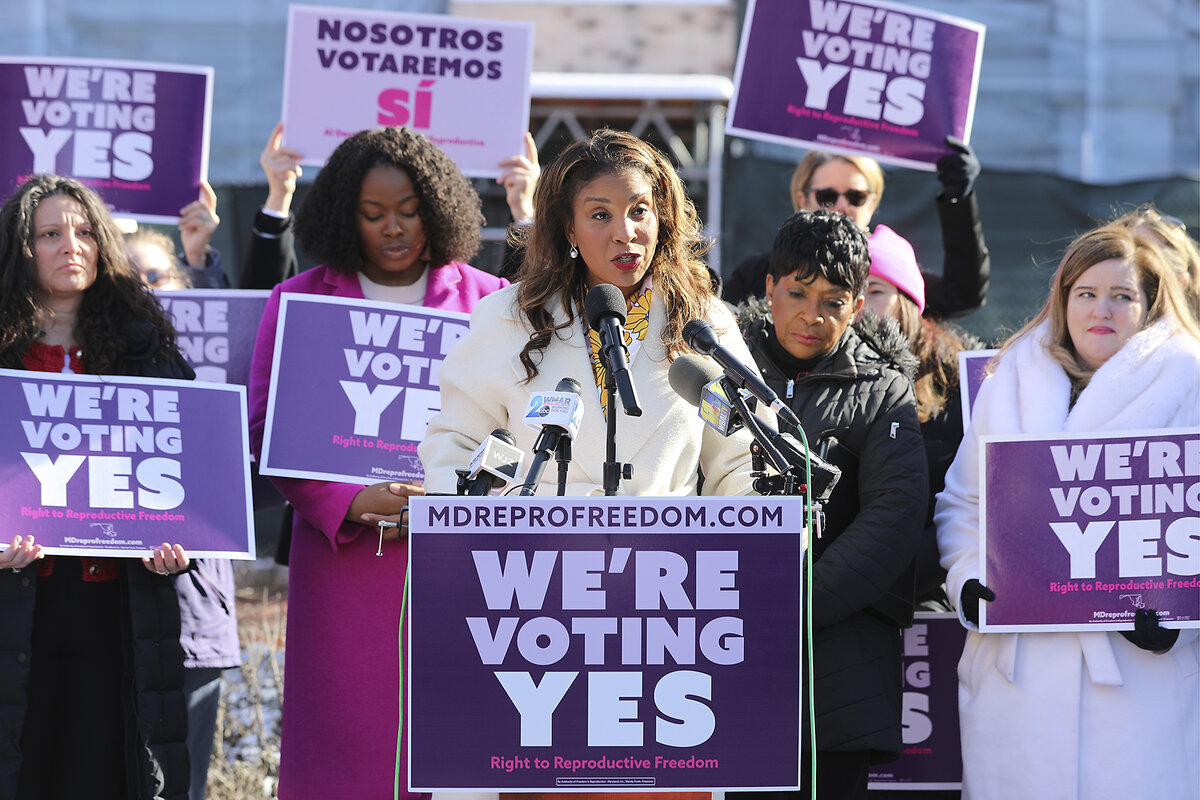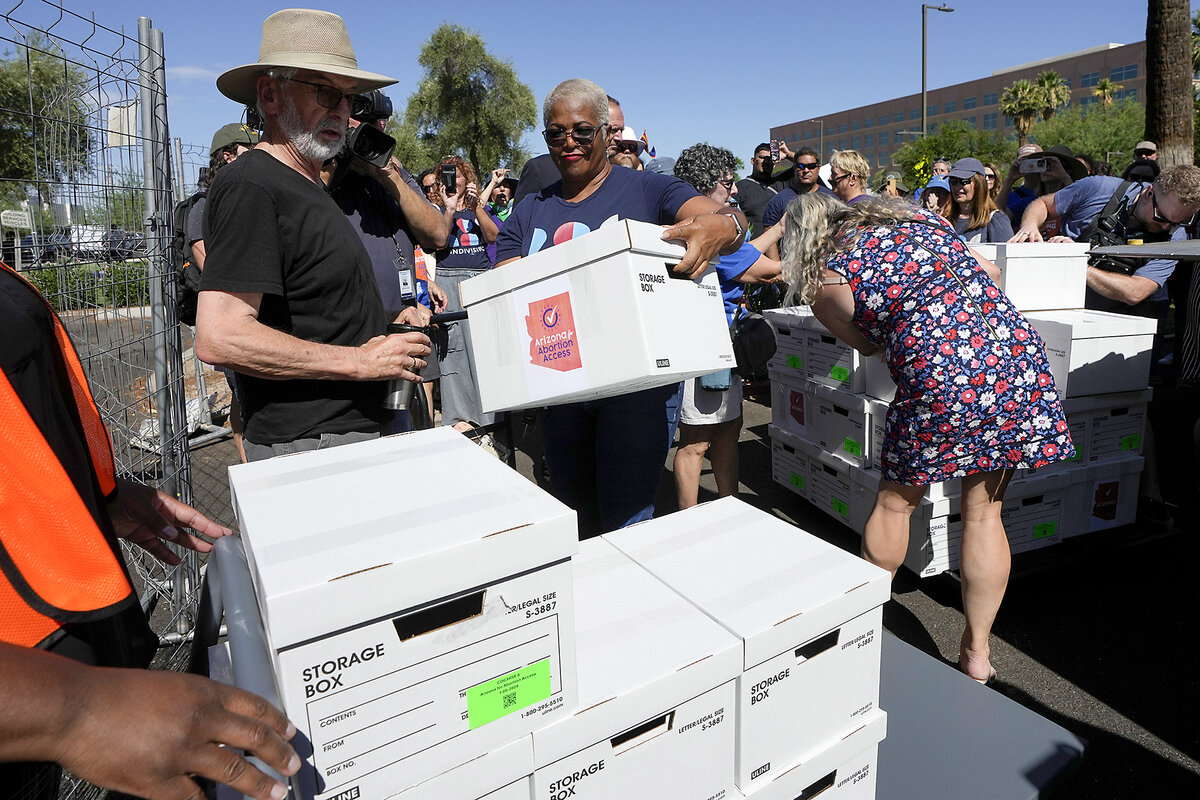Abortion on the ballot: What’s happening in 10 key states
Loading...
When the U.S. Supreme Court overturned Roe v. Wade in 2022, eliminating the nationwide right to abortion, it handed the issue to the states – and their voters. The Nov. 5 election, more than any other moment to date, will tell us how states are responding.
Ten states, accounting for one-fifth of the U.S. population, will vote on some kind of abortion amendment to their state constitution. Since the court reversed Roe in Dobbs v. Jackson Women’s Health Organization, the United States has fractured into a patchwork of varying restrictions on access to the procedure. About half the country has measures on the books protecting broad access to abortion, and about half the country now has strict limits or an outright ban.
This election will further clarify that landscape, and potentially be decisive in contests further up the ballot by driving turnout. Easier than amending the U.S. Constitution, this kind of state-by-state modulation illustrates the function that state constitutions are meant to play in American democracy, experts say.
Why We Wrote This
The U.S. Supreme Court overturned Roe v. Wade two years ago, passing the issue of abortion rights to the states – and their voters. Next week’s election will show us how states respond.
State constitutions “don’t have the sanctity of the federal Constitution, for better or for worse,” says Justin Long, an associate professor at Wayne State University Law School in Detroit.
That likely means, he adds, that in coming elections some states will see “a back and forth” over constitutional protections for abortion.
Which states are voting? And what are they voting on?
In Nebraska, voters will choose between two competing abortion amendments. One would effectively codify existing state law, which bans abortion in the second and third trimesters, with exceptions for rape, incest, and to save the life of the mother. The other proposed amendment would protect the right to abortion until viability – considered by most doctors to be around 24 weeks into a pregnancy – or later to save the life of the mother.
If both measures pass, Nebraska Republican Gov. Jim Pillen would have to decide if they are in conflict. If he decides that they are, the amendment with the most votes would go into effect.
Residents in three states with expansive abortion protections will be voting on whether to enshrine those protections in their state constitutions.
In New York, where abortion has been legal up to viability since 1970, voters will consider a proposed “Equal Rights Amendment.” This would expand its existing prohibition on discrimination based on race, color, and religion to include “pregnancy, pregnancy outcomes, and reproductive healthcare and autonomy,” as well as sexual orientation and gender identity.
In Colorado and Maryland, two of nine states where abortion is legal at any stage in a pregnancy, proposed amendments would enshrine a right to abortion in their state constitutions.
Meanwhile, Nebraska is one of five reliably red states where residents will be voting on abortion amendments.
- In Montana, a proposed constitutional amendment would guarantee a right to abortion before viability. After the Dobbs ruling, abortion remained legal in the state until viability, per a 1999 state Supreme Court decision.
- In Florida, where a recent law banned abortion after six weeks of pregnancy, a proposed amendment would protect a right to abortion until viability.
- In South Dakota – where abortion has been illegal, with some exceptions, since 2022 – residents will vote on amending the state constitution to protect a right to abortion in the first two trimesters of pregnancy.
- In Missouri, which also enacted a near-total ban on abortion in 2022, voters will consider a ballot measure that would establish a right to abortion until viability in the state constitution.
Two purple states will also be voting on abortion amendments:
- In Arizona, where abortion is banned after 15 weeks of pregnancy, a proposed constitutional amendment would establish a right to abortion up to viability, and later to protect the life of the mother.
- In Nevada, a proposed constitutional amendment would codify existing state law, which permits abortion during the first 24 weeks of pregnancy.
In most of these states, passage requires simple majorities. The exceptions are Colorado and Florida, where constitutional amendments require 55% and 60% of the vote, respectively.
Recent polling suggests that most of the proposed amendments are likely to pass. But Florida, with its 60% threshold, might not make it. A survey conducted last week by St. Pete Polls showed the Florida abortion amendment falling short with 54% support, while another poll, by the University of North Florida, showed the measure reaching the minimum 60%.
In Nebraska, meanwhile, a recent poll found that a plurality of voters support both proposed amendments, but the initiative preserving the state’s current 12-week ban has slightly more support.
Could these votes affect other races on the ballot?
It’s unclear.
Polls consistently show that supporters of the more expansive abortion rights are more likely to back Democrats than to back Republicans. But data also suggest that a significant proportion of conservatives would be willing to vote in favor of an amendment favoring abortion rights as well as Republican candidates.
In the swing state of Arizona, for example, recent polls show a supermajority of support for the proposed abortion amendment and show Donald Trump with a slight lead over Kamala Harris. In Montana, incumbent Democratic Sen. Jon Tester is trailing in recent polls, but a 2023 survey found that 6 in 10 voters believe abortion should be legal in many or all circumstances.
That’s bolstered hope among Missouri Democrats that the ballot measure will help their party’s candidates, says Steven Rogers, an associate professor of political science at St. Louis University. But “If you look at political science research, there isn’t a lot of evidence that it helps, that there’s reverse coattails,” he says.
How these amendments could make a difference is in close races, if they bring more voters to the polls. With young women in particular – who overwhelmingly support abortion rights and Ms. Harris, but are not yet considered reliable voters – an abortion amendment could attract decisive votes, experts say.
“If the abortion amendments have been an effective mobilization forcer, it could benefit the Democrats,” says Don Levy, director of the Siena College Research Institute.
What could these votes mean for abortion access?
At the moment, the U.S. is split roughly in half between states where abortion is banned completely, or almost completely, and states where the procedure is legal in most or all circumstances.
In 2022, about 21.5 million women of childbearing age lived in states that ban abortion after six weeks of pregnancy or fewer, according to Politifact. If all 10 states pass their proposed abortion amendments, abortion rights will be expanded for roughly 7 million women of childbearing age. For roughly 4 million women of childbearing age, nothing will change in practice.
“In the abortion-access states, what the amendments might do is cause legislators to enact increased protection for abortion access, such as funding or going beyond what the amendment provides,” says Naomi Cahn, a professor at the University of Virginia Law School. “In the abortion-restrictive states, I think it’s much more difficult to say what would happen.”
This election cycle could trigger longer-reaching changes. In some states, there are already discussions over pursuing constitutional amendments to restrict abortion again. In other states, like Arizona, residents will also be voting on ballot questions that would make it more difficult in the future to amend their state constitution.
If the Missouri amendment passes Nov. 5, for example, “It’s widely anticipated that ... in 2025 or 2026, we may have another amendment going the other way,” says Professor Rogers. “We’re going to be in this abortion back and forth for a while.”
















